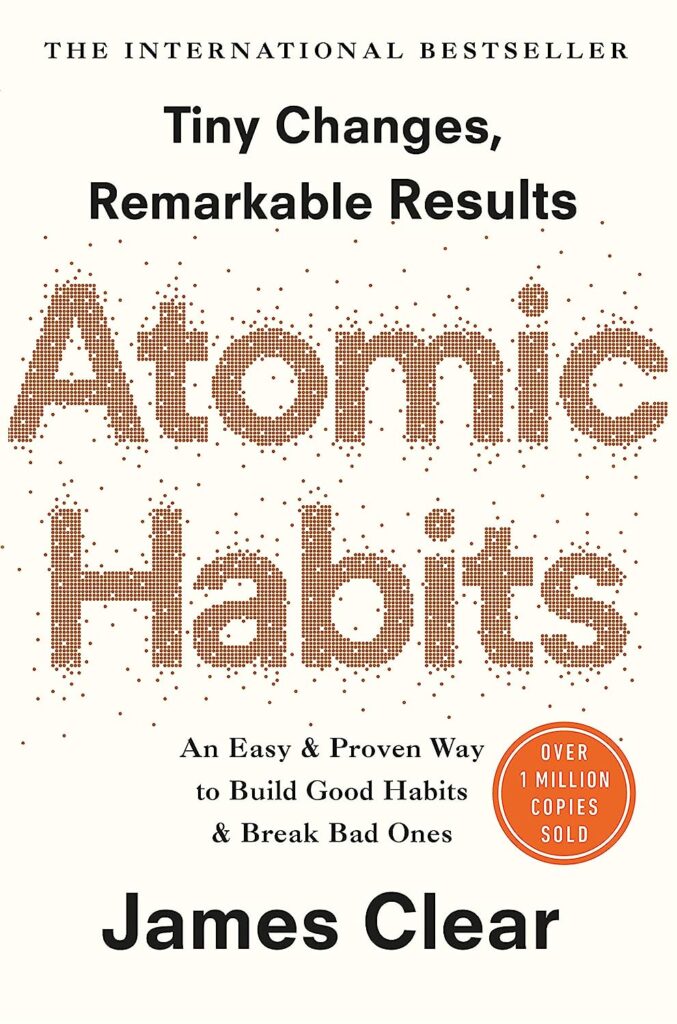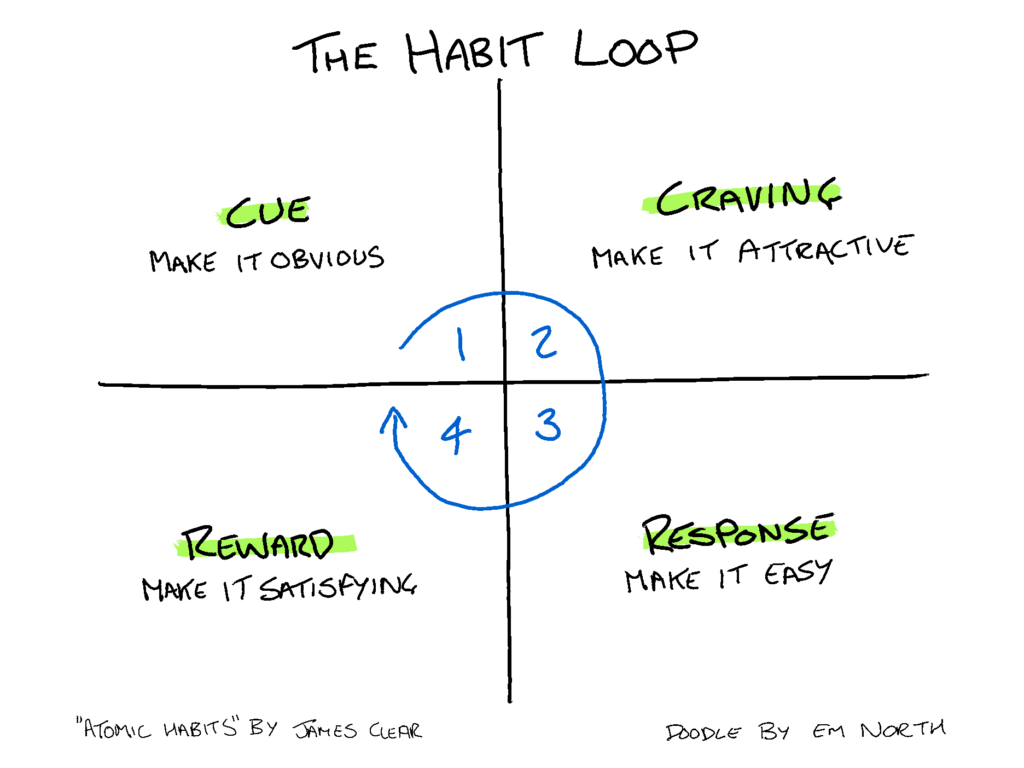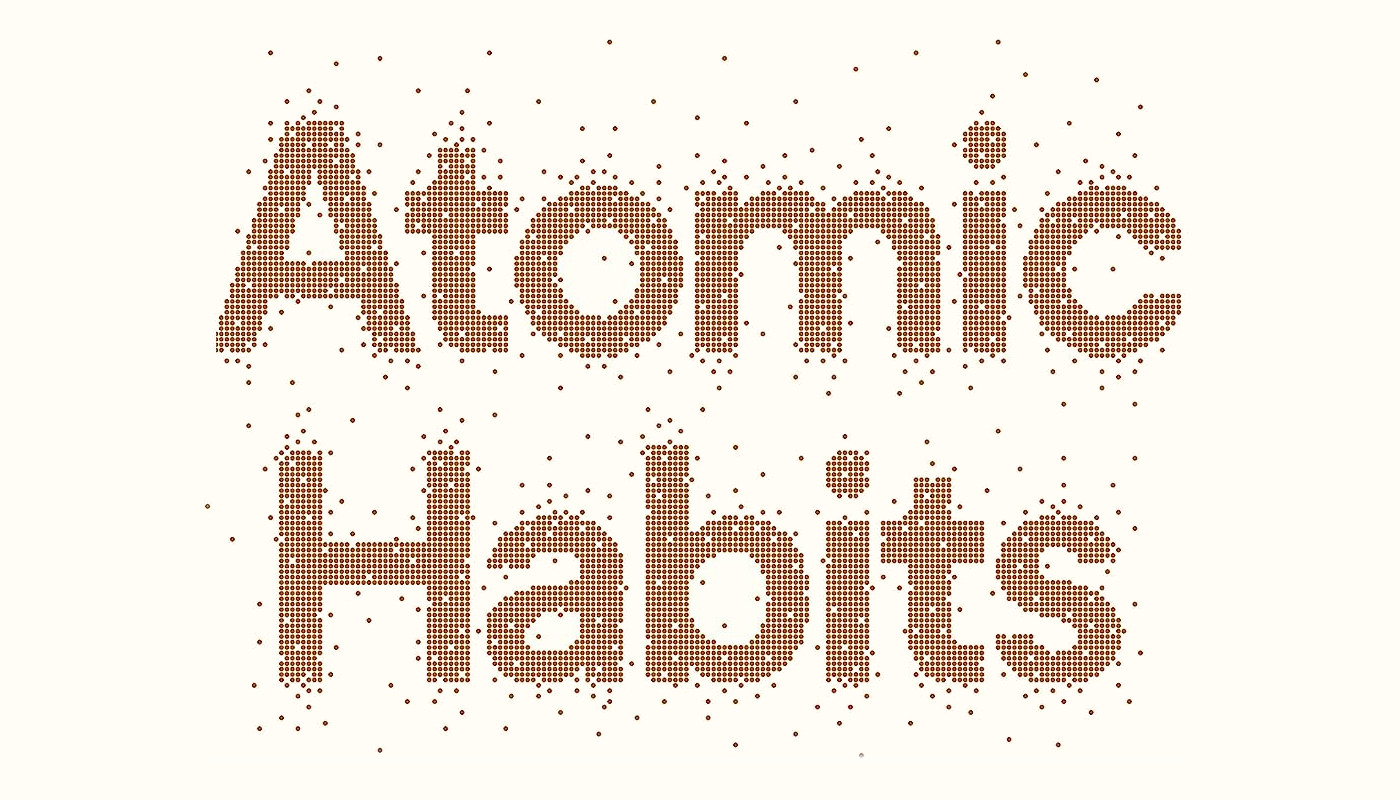I recently read (well, listened to, as an audiobook to be more accurate) “Atomic Habits” by James Clear. I found it incredibly eye-opening and inspirational. In fact, I’ve already been putting some of what I learnt into practice and am feeling the benefits. Coincidently, I came across the app “Habitica” at the same time as reading this book. The two in tandem have been revolutionary for me. As such, I thought there would be no better way to cement what I learnt than to write up my takeaways here and share my learnings onwards!

If you are looking for a book that can help you improve your life through taking control of both positive and negative habits, “this “Atomic Habits” is the book for you. It is a comprehensive, practical guide on how to change your habits and get 1% better every day.
What are “atomic habits”?
Atomic habits are small, simple, and easy actions that you repeat regularly. They are the building blocks of your daily routines, and they shape your identity, performance, and outcomes.
Habits are the compound interest of self-improvement
James Clear
The power of atomic habits lies in their ability to create compound growth. Just like saving money, improving by 1% every day can lead to remarkable results over time. In fact, if you improve by just 1% every day, you will be a massive 37 times better after just one year. Conversely, declining by 1% every day can stack up just as quickly and lead to disastrous outcomes which are much more difficult to resolve than they would have been to avoid.
The difference between success and failure is determined not by our goals, but by our systems. Winners and losers of a race have the same goal. What separates them is their systems. Not the “what”, but the “how”.
How do habits work?
To understand how to change your habits, you need to understand how they work. Clear explains that habits are the result of a feedback loop that consists of four steps:
- Cue: A cue is a bit of information that triggers your brain to initiate a behaviour. It can be something external, like a sound, smell, time, place, or person, or something internal, like a thought or feeling.
- Craving: A craving is the motivational force behind every habit. It is the desire to change your state, to feel different, to satisfy a need, or to achieve a goal. Cravings are what drive you to act on your cues.
- Response: A response is the actual behaviour that you perform, which can be physical, mental, or emotional. It is the action that you take to fulfil your craving and reduce the tension it creates.
- Reward: A reward is the outcome of your behaviour, which can be positive or negative, immediate or delayed, obvious or subtle. Rewards are what reinforce your habits and make you want to repeat them in the future.
Clear summarises this loop with the following formula:
Behaviour = Cue + Craving + Response + Reward
The key takeaway is that habits are not about what you do, but about how you feel. You do not repeat a habit because you love the behaviour, but because you love the reward. You do not break a habit because you hate the behaviour, but because you hate the consequence.

How can you change your habits?
Clear proposes a simple framework for changing your habits, based on the Four Laws of Behaviour Change. These are:
- Make it obvious
- Make it attractive
- Make it easy
- Make it satisfying
Each law corresponds to a step in the habit loop (cue, craving, response, reward). By applying these laws, you can design your environment, mindset, and actions to create good habits and break bad ones.
Make it obvious
For example, to make a habit obvious, you can use implementation intentions, which are statements that specify when, where, and how you will perform a habit. For instance, “I will meditate for 10 minutes at 9am in my bedroom.” This way, you can link your habit to a specific cue that triggers it – being in your bedroom at 9am.
Make it attractive
To make a habit attractive, you can use temptation bundling, which is pairing a habit you want to do with a habit you need to do. For example, “After I finish my work, I will watch an episode of my favourite show.” This way, you can associate your habit with a positive feeling that motivates you to do it.
Make it easy
To make a habit easy, you can use the two-minute rule, which is breaking down your habit into a simple action that can be done in two minutes or less. For example, “I will read one page of a book.” This way, you can reduce the friction and effort required to start your habit and can practice it this way until it is easy to do more.
Make it satisfying
To make a habit satisfying, you can use a habit tracker, which is a tool that helps you measure and visualise your progress. For example, you can use a calendar, a spreadsheet, or an app to mark off each day you perform your habit. In this way, you can reinforce your habit with a sense of accomplishment and feedback.
For me, I am finding the gamification app “Habitica” to be everything I never knew I needed, and is the perfect tool for me personally in making habits “satisfying” and rewarding.
The power of identity-based habits
One of the most important insights from the book is that changing your habits is not only about changing your behaviour, but also changing your identity. Your identity is the set of beliefs and values that define who you are and what you do. Your habits are a reflection of your identity.
To change your habits for good, you need to change your identity first. You need to decide the type of person you want to be and act like that person. You need to prove it to yourself with small wins that reinforce your desired identity.
For example, if you want to be a writer, you need to write every day, even if it’s just a few sentences. Every time you write, you are casting a vote for being a writer. The more votes you cast, the more you believe in your identity as a writer. You are then not “trying to be a writer” or “hoping to be a writer”: you can and should instead be able to say “I am a writer”.
The key to building identity-based habits is to focus on who you wish to become, not what you want to achieve.
The ultimate form of intrinsic motivation is when a habit becomes part of your identity.
James Clear
“Atomic Habits” in Conclusion
“Atomic Habits” is a book that can help you change your life by changing your habits. It teaches you how to create good habits and break bad ones using a simple and effective framework. It also shows you how to align your habits with your identity and become the person you want to be.
If you are interested in learning more about the book, you can get your copy here.
You can also visit James Clear’s website for more resources and tips on habit formation.
I hope you enjoyed this post and found it useful. Thank you for reading!
Disclaimer: I’m not affiliated with the author in anyway, and this is not a sponsored post. All thoughts are my own entirely. Amazon links in my posts are affiliate links, which means that an Amazon Associate I earn a small amount of commission from qualifying purchases, at zero cost to you.

